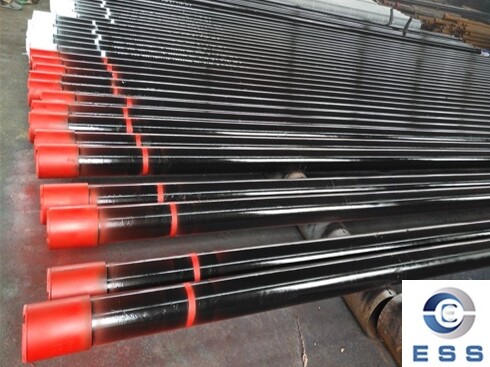Casing pipe is
an OCTG pipe,
usually made of steel, with an outer layer covered with environmentally
friendly plastic or other materials. Lowering casing pipe means that during the
drilling process, a casing pipe is built into the wellhead to protect the well
wall and maintain the integrity of the wellbore. It is also a prerequisite for
the next step of cementing.

Purpose of lowering casing pipe
1. Protect the well wall: The drill bit
will wear the well wall during the drilling process, and lowering casing pipe
can protect the well wall from being worn.
2. Maintain the integrity of the wellbore:
After the casing pipe is lowered, it can maintain the integrity of the well
wall and prevent the well wall from collapsing.
3. Improve drilling efficiency: Lowering casing
pipe can shorten drilling time and improve drilling efficiency.
Reasons for encountering resistance when
lowering casing pipe
Obstruction when lowering casing pipe is a
common problem in drilling. The main reasons include:
1. Formation gravel, mud, oil layer
rupture, etc. cause pipe string obstruction.
2. Insufficient, excessive, or too small
drilling fluid flow leads to abnormal operation of the pipe string.
3. The drill bit drills into the formation,
generating debris or blockage.
Solutions
1. Increase drilling fluid flow: When
lowering casing pipe encounters resistance, it can be solved by increasing the
drilling fluid flow. This can increase the running speed of the pipe string,
thereby destroying the formation gravel or debris, etc., making it easy to pass
through the pipe string.
2. Change the type of drilling fluid:
Changing the type of drilling fluid can also solve the problem of encountering
resistance when lowering casing pipe. For example, the formation gravel or
debris can be destroyed by increasing the viscosity of the drilling fluid,
making it easy to pass through the pipe string.
3. Use professional tools: During the
drilling process, if the casing pipe is blocked, professional tools can be used
to solve the problem. For example, a drill string vibrator can be used to break
up formation gravel or debris, etc., so that it is easy to pass through the
pipe string; or a pipe string cleaner can be used to remove impurities and
debris in the pipe string.
4. Take other measures: In addition to the
above methods, other measures can be taken to solve the problem of resistance
when lowering the casing pipe. For example, the formation gravel or debris can
be broken by increasing the drill bit speed or changing the drill bit shape, so
that it is easy to pass through the pipe string.
Summary
In short, it is a common problem to start
the pump when the casing pipe is blocked during drilling, but this problem can
be solved through the above solutions. Of course, for specific situations,
corresponding measures need to be taken according to the actual situation.













 Eastern Steel Manufacturing Co.,Ltd not only improve product production and sales services, but also provide additional value-added services. As long as you need, we can complete your specific needs together.
Eastern Steel Manufacturing Co.,Ltd not only improve product production and sales services, but also provide additional value-added services. As long as you need, we can complete your specific needs together.










